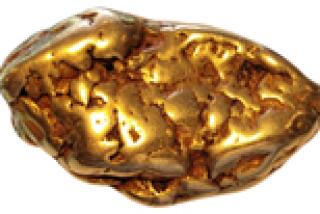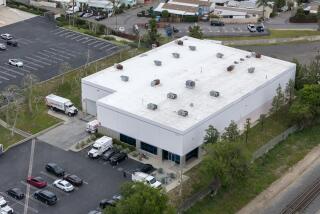2 Women Steal Fetus From Exhibit
- Share via
The preserved remains of a 13-week-old fetus, part of a traveling international exhibit of human bodies and body parts, was stolen from the California Science Center by two young women captured on videotape, police said Tuesday.
The women appeared to wait for the crowd to thin at the round-the-clock exhibit before one reached into a plexiglass case and took the 4-inch specimen just before 3 a.m. Saturday, police said.
The theft was the first ever for “Body Worlds: The Anatomical Exhibition of Real Human Bodies,” which has been viewed by more than 60 million people over nine years in Europe, Asia and the United States.
More than 900,000 people have visited the exhibit at the Exposition Park museum. “Body World” was in the middle of a 62-hour nonstop run from Friday morning to midnight Sunday to mark its end. Police and science center officials said a grainy video shows two women appearing to wait for people to leave the area and then prying open the case.
One of the women, described as 18 to 25 years old with dark clothes and dark hair pinned up, appeared to place the specimen in a satchel or her pants pocket, said Los Angeles Police Det. Willem Erkelens.
The other woman appeared to be 25 to 35 with bright blond hair and was wearing a red scarf, striped sweater and long red skirt, Erkelens said. After the theft, the women casually looked at another display, the preserved body of a woman who was five months pregnant.
Police don’t know the motive for the theft. Police, museum and exhibit officials said they had received no threats regarding the reproduction exhibits.
Erkelens declined to offer details about the theft, but said the women didn’t appear to have tools.
The displays were created by German scientist Gunther von Hagens, who used a process in which specimens are dried and body fluids are replaced with plastics.
Some of the partial specimens were purchased from collections, but the whole bodies were donated specifically for display.
The stolen fetus came from an early 20th century anatomical collection.
The exhibit includes 200 bodies and body parts, skinned and dissected, laid open to show bones, muscles and nerves. Some of the bodies are in lifelike poses, including the body of a man shown playing chess with his brain exposed.
One work is titled “Suicide by Fat--Obesity Revealed” and another is “Orthopedic Man,” which shows various surgically implanted devices.
The exhibits have drawn vigorous protests in other countries.
In London in 2002, a patron attacked one of the works with a hammer and another threw a blanket over the preserved cadaver of a pregnant woman.
At the California Science Center, the reproduction section of the exhibit was displayed on a floor separate from the other exhibits, said Diane Perlov, deputy director of exhibits at the Science Center.
“We didn’t want people to have to go through there if they didn’t want to,” she said.
Although some people have said the displays straddle the line between art and science, Perlov said the primary purpose is to educate.
“This is clearly a science exhibit,” Perlov said. “That being said, the human body is a beautiful thing, and it was displayed beautifully, so a lot of people saw artistry in this.”
Perlov said the reproduction section was “one of the most appreciated sections of the exhibition.”
Von Hagens’ daughter made a plea at the Science Center for people to help find the stolen specimen. Bera von Hagens, 22, was visiting Los Angeles from Germany to help move the displays to their next destination in Cleveland. She said the specimen’s value went beyond money.
“Monetary value is a bad word” to use here, she said. “The reproduction section of the exhibition is the most eye-opening and the most fascinating for many, and also very emotional. It’s very unfortunate and very sad to not have that future educational value for future visitors.”
Dr. Angelina Whalley, director of the Institute for Plastination and Gunther von Hagens’ wife, said she was “distraught and literally speechless when I heard of this theft. More than 60 million have seen this exhibition already, and almost 1 million in Los Angeles alone, and they were really in great awe of what they could experience inside the exhibition.”
Whalley said the specimen had been “handed over to us in trust. Originally, it was part of a very old anatomical collection, given to us to make available to the public for teaching anatomy.”
“Therefore, it puts really a great burden ... morally on our shoulders. We are really in great hope that we can get this specimen back,” she said.
The exhibit was the most popular ever at the California Science Center, Perlov said. It was first displayed from July to January and ended with a 41-hour run.
So many people turned out for the second run that lines again snaked through the lobby and outside.
More to Read
Sign up for Essential California
The most important California stories and recommendations in your inbox every morning.
You may occasionally receive promotional content from the Los Angeles Times.














